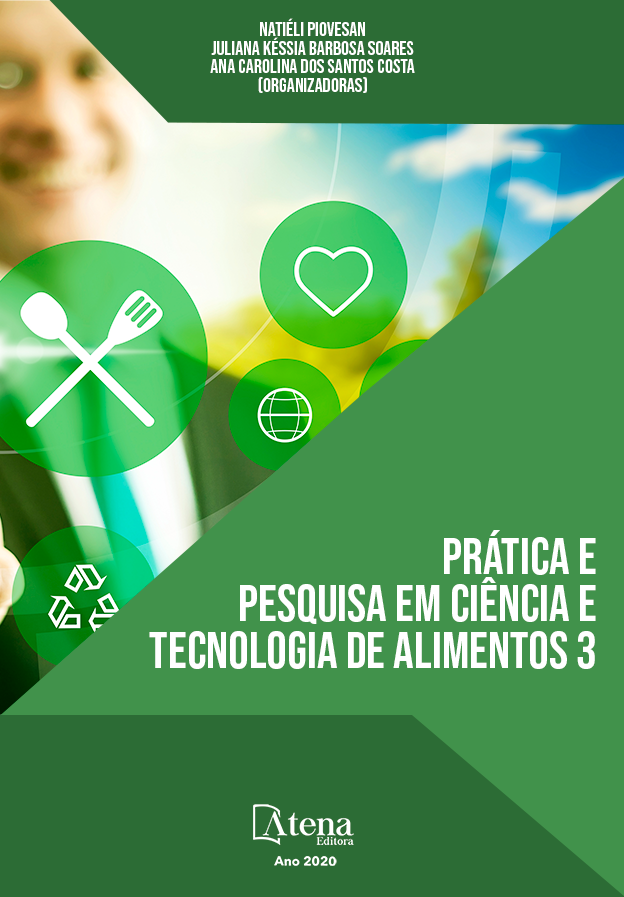
PRINCIPAIS MATERIAIS UTILIZADOS EM EMBALAGENS PARA ALIMENTOS: UMA REVISÃO DE LITERATURA
A visão da embalagem é um componente que incorpora prestígio aos produtos. Frequentemente, a embalagem se faz parte integrante na técnica de elaboração e estabilidade dos alimentos. A composição da embalagem no qual o alimento está acondicionado representa um fator que influencia no seu tempo de prateleira, pois é recomendado que estas protejam as propriedades sensoriais da mercadoria, que são elas: sabor, textura, doçura e aceitação global, como também evitar deteriorações químicas, físicas e microbiológicas. O único material que sintetiza todas as qualidades essenciais para armazenar alimentos é o vidro, pois são embalagens seguras, podem ser recicladas, podem ser reutilizadas e sua versatilidade e impermeabilidade são outras características únicas do vidro. A habilidade em resistir a desgastes e mecanicamente configura-se por atribuir as fundamentais propriedades dos metais. Visto o aumento excessivo na produção dessas embalagens, a sociedade desperta a preocupação quanto a confecção dessa variedade de itens fundamentados em fontes sustentáveis, as quais podem ser desenvolvidas partindo de inúmeros tipos de materiais. A rotulagem é instrumento legal e facilitador, onde atua ajudando a população a entender acerca das particularidades dos alimentos. O presente trabalho buscou, mediante uma revisão bibliográfica aprofundada, fornecer um panorama atual sobre os principais materiais utilizados na indústria alimentícia abordando suas qualidades. Os resultados apresentaram a vasta existência de variedade de materiais utilizados na manufatura de embalagens e que esses trazem grande importância sobre a condição do alimento, tais como conservação, transporte e estocagem.
PRINCIPAIS MATERIAIS UTILIZADOS EM EMBALAGENS PARA ALIMENTOS: UMA REVISÃO DE LITERATURA
-
DOI: 10.22533/at.ed.22420280813
-
Palavras-chave: Embalagem, Armazenamento, Proteção, Qualidade
-
Keywords: Packing, Storage, Protection, Quality
-
Abstract:
The packaging vision is a component that adds prestige to the products. Often, packaging is an integral part of the technique of food preparation and stability. The composition of the packaging in which the food is packaged represents a factor that influences its shelf life, as it is recommended that these protect the sensory properties of the merchandise, which are: flavor, texture, sweetness and global acceptance, as well as avoiding deterioration chemical, physical and microbiological. The only material that synthesizes all the essential qualities for storing food is glass, as they are safe packaging, can be recycled, can be reused and their versatility and impermeability are other unique characteristics of glass. The ability to resist wear and mechanically configured by attributing the fundamental properties of metals. In view of the excessive increase in the production of these packages, society raises concerns about the making of this variety of items based on sustainable sources, which can be developed from many types of materials. Labeling is a legal and facilitating instrument, where it works by helping the population to understand about the particularities of food. This work sought, through a thorough bibliographic review, to provide a current overview of the main materials used in the food industry addressing their qualities. The results showed the vast existence of a variety of materials used in the manufacture of packaging and that these have great importance on the condition of the food, such as conservation, transport and storage.
-
Número de páginas: 17
- Magno de Lima Silva
- Natasha Matos Monteiro
- Wellyson Jorney Dos Santos Silva


